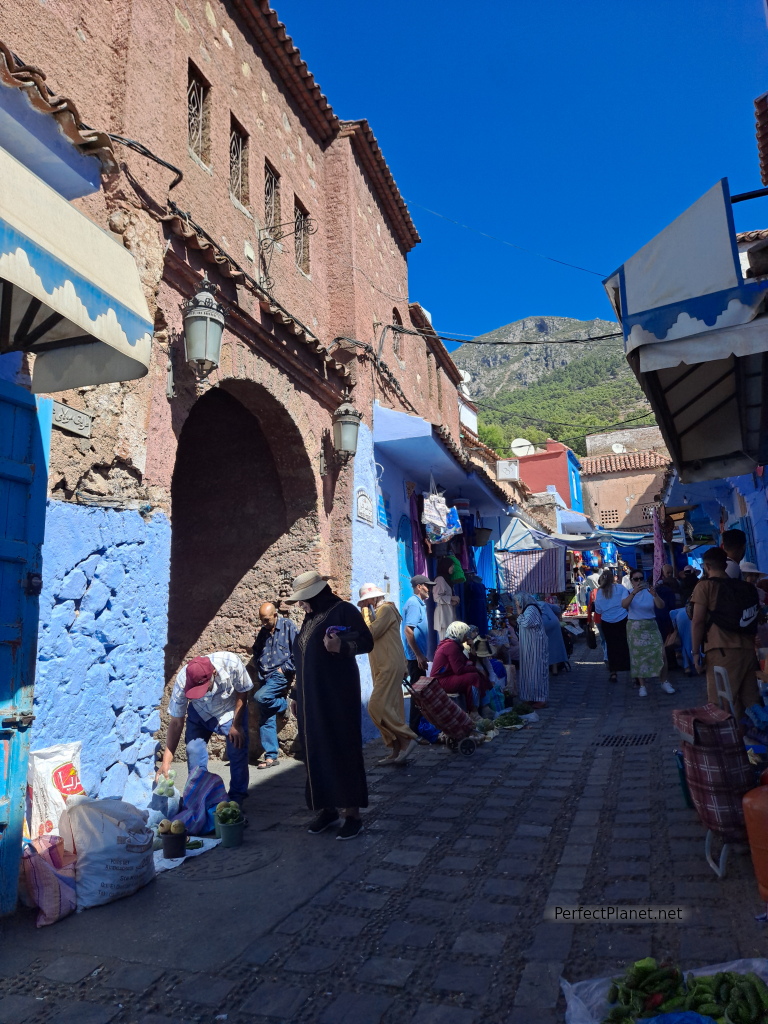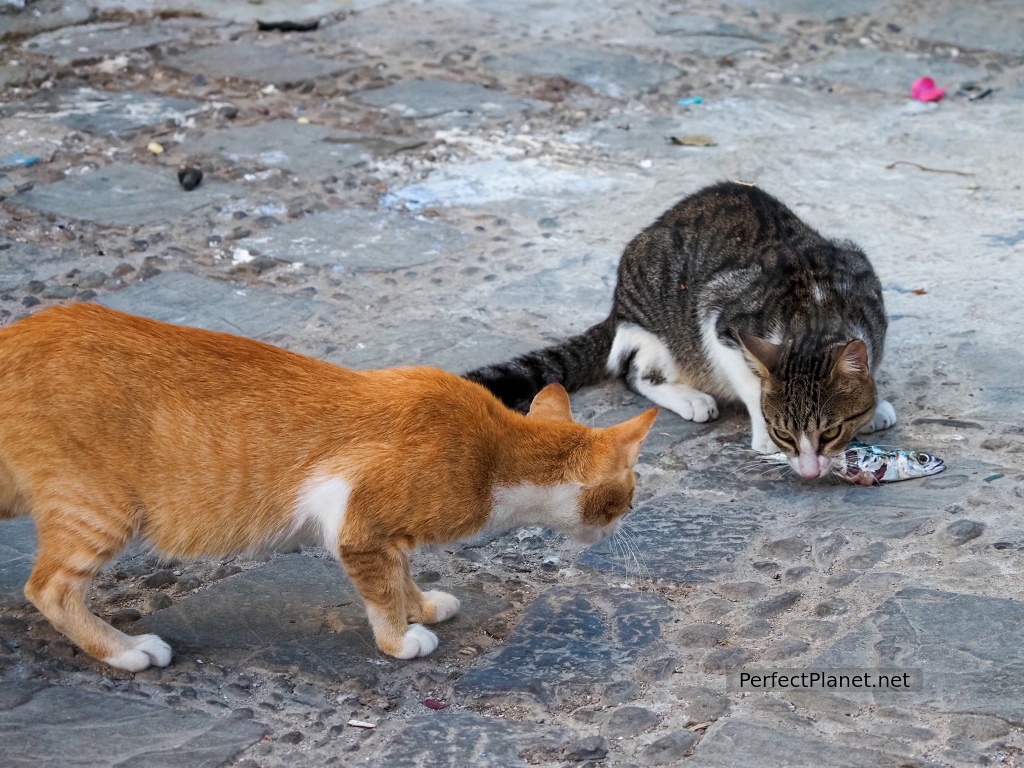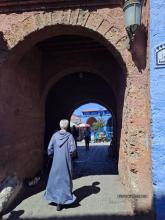Chefchaouen is located in the northwest of Morocco, in the Rif mountain range.

Chefchauen
It was founded in 1471 on the site of a small Berber village where Muslim and Jewish exiles from Al-Andalus (Andalusia) arrived. For centuries it was considered sacred and has undergone few alterations. It was a Spanish protectorate until 1924 when Spanish troops withdrew after losing the Battle of the Rif.
Today, in spite of tourism, it retains all its essence, a city full of local life that you can't miss.

Chefchauen
Things not to miss in Chefchaouen
We suggest a tour of the centre of the Medina so that you don't miss any of its nooks and crannies. Although getting lost is the real attraction of the city.

Bab Souk
Our tour starts at Bab el Ain, one of the entrance gates to the Medina built in the 16th century and located in the southern part of the city.
Once inside the Medina we take the street on our left and walk to the Bab el Ain oven. An old wood oven that still works, you can look but not take pictures.

Chefchauen
We continue up the street towards the north until the Bab Souk gate where Hassan I street begins. This commercial street serves as a reference to visit other small corners such as Asri alley or Bab Sidi Bouchouka.

Chefchauen
Derb el Asrri, this narrow alley has become famous for its stairs which hundreds of influencers have popularised on social media. We remind you to be respectful of locals who don't want to be in the photos.

Chefchaouen
Bab Sidi Bouchouka, this corner has become famous for its flowerpots and colourful mosaics.
Continue along Hassan I Avenue and before you reach Bab el Onsar you will find the olive tree square and an old mosque.

Chefchaouen
Bab el Onsar is another of the gates of the Medina, from the 16th century, and if you go through it you reach the area of the river and the waterfalls.

Mosque
The walk back along the river is also worthwhile.

Chefchauen
Rue Ibn Asskar and Rue Assaida Alhorra (decorated with beanies) are other wonderful streets you can't miss in Chefchaouen, and the whole city is amazing.
Many of the streets ask for donations for their upkeep.

Chefchaouen
You cannot leave Chefchaouen without visiting its magnificent squares, two of which we would like to highlight:
Place el Haouta where we recommend you to stop and have a juice or a tea.
Uta el Hamman Square where the Great Mosque and the Kasbah are located.

Chefchauen
Another must-see in Chefchaouen is a visit to a hammam. A hammam is a traditional public bath. In many cities they have been modernised and turned into a spa and wellness centre.
If you want a unique experience, we recommend Hammam Ben Aazzouz. We pay 125dh/pax but it is negotiable. Only women. The experience is brutal. They give you a bucket to put your personal things in. You only need to bring a panty, towel and flip flops, we brought shampoo but it's not necessary. The facilities are basic, they are used by the local women, they exfoliate and wash you with black soap and give you a massage.
For breakfast we recommend the Food Mounir restaurant in El Houta square (next to the Kasbah), eggs with cheese and olives and mint tea for 35dh/pax.

Cats
For lunch Bab Ssour restaurant, traditional Moroccan food, salads, soups, tajines, tanjias, bread and desserts for 294dh for four.

Dessert
Night falls over Chefchaouen and the street is full of local life. We buy harira soup for dinner at Restaurant talambouti.

Chauen
Accommodation in Chefchaouen in a family home
Breakfast in eggs with cheese and olives and mint tea for 35dh/pax
Lunch at Bab Ssour restaurant 294dh/4pax
Dinner harira soup at restaurant Talambouti
- Log in to post comments







